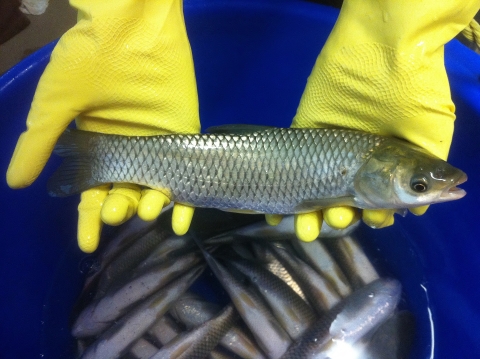Photo By/Credit
Susan "Nikki" Persons
Date Shot/Created
01/20/2012Media Usage Rights/License
Public Domain
Image
Grass carp is an invasive fish species that was imported into the United States in the 1960s. Because many conservationists wanted to reduce human dependencies on use of toxic chemicals. This introduction was considered to be an alternative to spraying herbicides to control aquatic vegetation. Grass carp remain valuable as a non-chemical, biological method to control invasive plants that can choke water distribution canals that provide irrigation and drinking water, and impair the intended use of ponds and lakes. But grass carp can also have a negative environmental impact if they spawn and over populate a water system. In response to the concern that non-native grass carp might be spread across the nation, the USFWS invested time and effort to find a way to keep grass carp from spawning. Subsequent studies resulted in the development of a functionally sterile triploid grass carp. Moreover, both states and industry worked with USFWS to build a set of safeguards for using triploid grass carp; which grew into the National Triploid Grass Carp Inspection and Certification Program. In practice, the USFWS certifies that the grass carp being shipped from a participating triploid grass carp producer to a specific destination should not contain diploid (fertile) grass carp. The Program is used by many state managers that prefer the use of sterile triploid grass carp, as an alternative to toxic herbicides, for the control of their invasive aquatic vegetation.
Species
